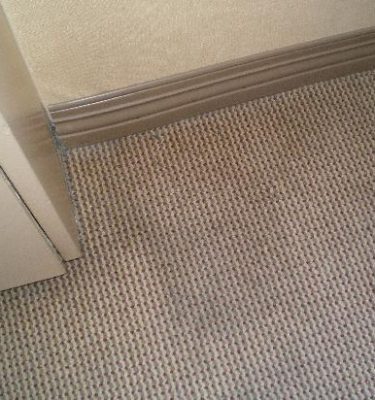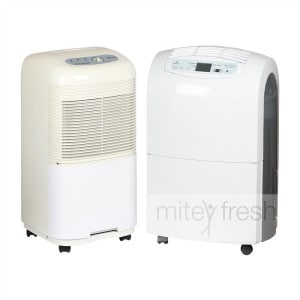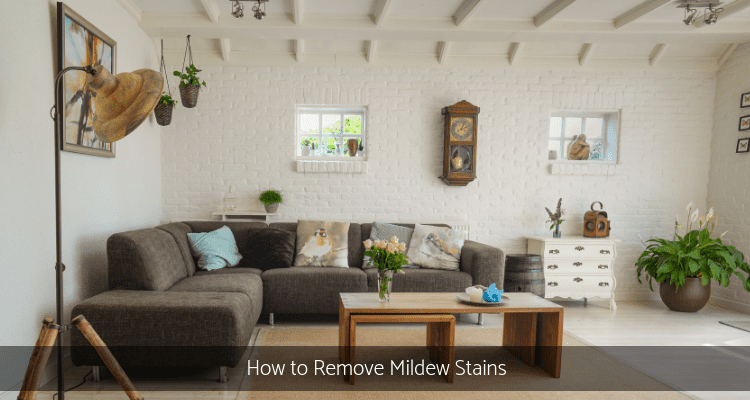
What is Mildew? Mildew is a type of fungi or mold that can invade your home by growing on your floors, walls and the ceiling. It grows on many types of material that goes into the construction of your home such as your carpet, insulation, drywall, wallpaper, wood and so on. It causes whatever it is on to look bad as and it is also bad for your health. Phlegm in your throat could be caused by mildew in your home. Removing the mildew from your home will cause you to feel better, and feeling better makes you happy! MiteyFresh can help and teach you how to remove mildew stains!
Mildew appears in moist areas in your home. Many basements are susceptible to being infested with mildew. After events such as flooding, dampness on your wall, a leak or even too much humidity, mildew can start to grow Since mildew initially travels through the air, it can easily float into a damp area and land. After it lands onto a moist surface, it can start to grow within 24 – 48 hours.
Mildew stain removal can be a simple process! Before you begin with mildew stain removal, try running a dehumidifier in the room. Applying a process of damprid to an area will prevent the mildew from spreading. To remove mildew stains on surfaces, such as linoleum or tiles, make sure you dry the surface and the surrounding area. Remove anything that the mold can spread to, such as clothing or carpeting. Move damp items away to assure that the mold does not spread further. Mixing bleach with water and applying it to the stain and scrubbing is a good way to do away with mildew. Be sure to rinse thoroughly. Be careful not to get bleach on you as it will ruin clothing!
PRODUCT:
Buy a Dehumidifier
Round the clock protection when you need it most! Reduce mould, mildew, dampness, condensation, odours. Relieve hayfever, sinus headache, influenza, sneezing, itchy eyes, stuffy nose, coughing, allergic rhinitis, asthma symptoms any time of year!

Mould removal from carpeting can be a bit trickier. First, you should try drying the carpet. If you’re able to move it, place it outside in the sun to dry. If you can’t move it, run some heaters near it to dry out the moisture. After you’ve done that, vacuum the carpet to remove any loose mildew spores. This will prevent them from spreading further. Apply a mold cleaning agent to the affected surface and begin scrubbing with a brush or white towel. (A coloured towel may bleed it’s colour onto the carpet.) If you don’t have access to this type of cleaner, applying laundry detergent mixed with water instead will work. After you’ve scrubbed the mildew stains away, run a wet or dry shop vacuum over the area to lift the water, detergent and mildew away from the carpet.
Towards healthier living, Carol Parr ♥
As Building Biologists, we have acquired knowledge of adverse health effects and recommend effective strategies to reduce occupants’ exposure by eliminating and controlling as many sources of pollutants in order to create healthy indoor living environments that are as exposure-free and natural as practically possible.
Author
-
We’re glad you’re here. We’re Carol and Tony, founders of one of the longest running Healthy Home Blogs in the world, Mitey Fresh Australia. We’ve been on this journey for the last 25 years and are passionate about helping families sift through health hazards and triggers like allergens, mould, water damage, chemicals and EMFs, to get clarity about what’s toxic and what’s not so they can create a healthy and happy home for their family they love. Each month, people visit this blog seeking focus on the health and wellbeing of their loved ones, sustainable and effective practice tips and guides, to help create and manage healthier indoor spaces, improve the built environment that is pleasing to the senses and support healthy living and nature, every day. Starting this blog was to help change people’s lives, one family at a time, and we can’t wait to share how its allowed us to stand next to you and show you how interpreting these synergies between buildings and the environment they are built in will impact upon the health and well-being of those who occupy them. Find out more about Healthy Homes and what this blog can do for you!





